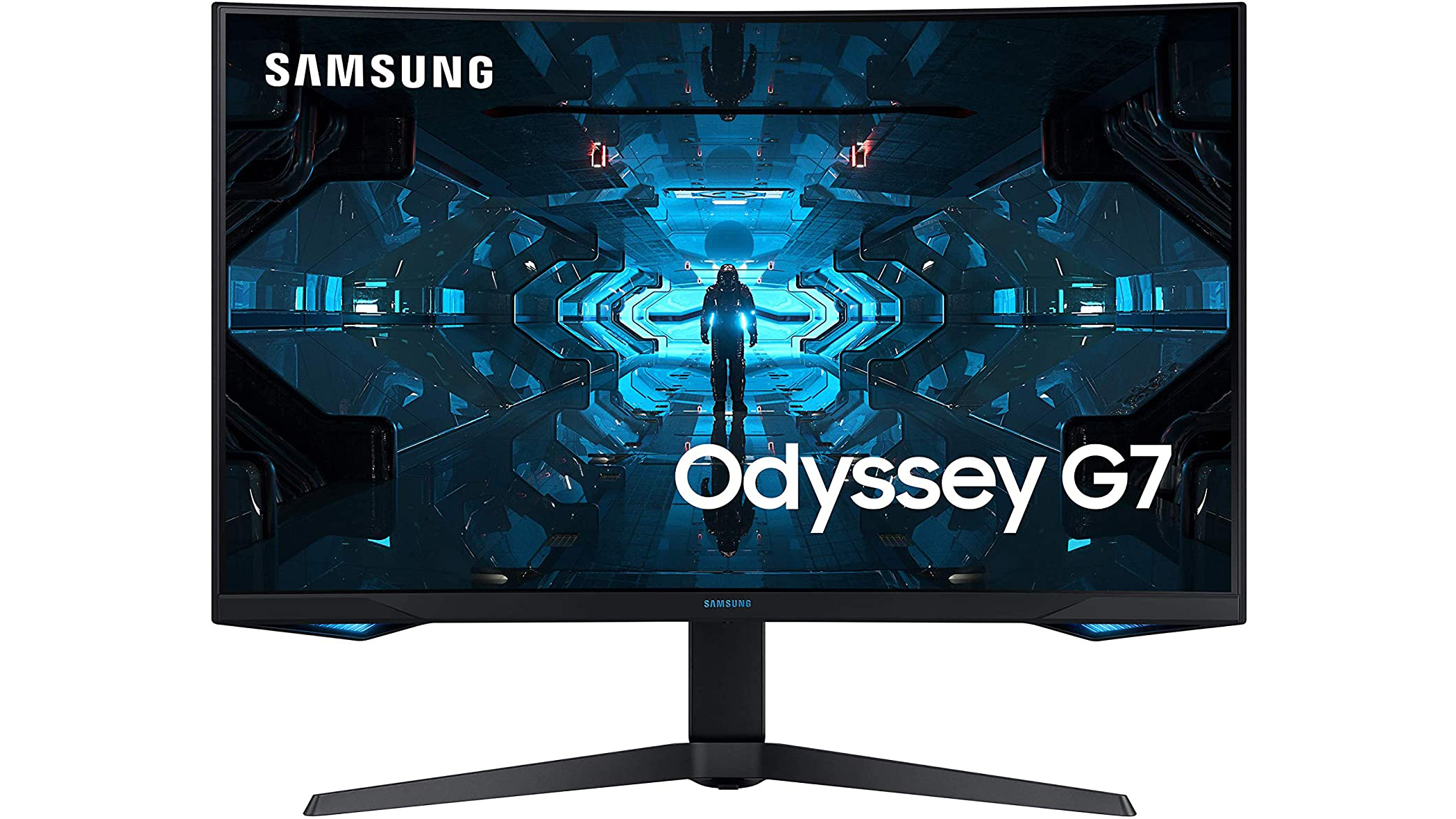
I mentioned lower input lag before, and you should know that the G7 supports Low Input Lag, or Adaptive Sync/G-Sync compatibility - but not both at the same time. The G7 is definitely better than the HDR400 experience that a lot of monitors have promised recently, but it’s not quite where it needs to be if you wanted to use this with HDR on all the time. If you want a proper HDR display, TVs or still-supremely expensive 4K screens like the Predator X27 or X35. So, we’re back to the usual HDR problem for PCs then. The G7 only has 8 backlight zones, and depending on the actual scene or content you’re watching at the time, you could end up getting a relatively ordinary, SDR-like experience. In practice, the biggest issue I noticed was a halo effect in HDR content (movies, or games like Death Stranding). Part of this isn’t helped by the monstrosity that is Windows’ support for HDR, or inconsistency across applications. The G7 supports HDR600, but you lose a hell of a lot of brightness when actually enabling HDR mode. A lot of people I know would have instantly bought the Odyssey G7 if it was a flat screen, and many of them said they would have still accepted a minimal 1800R curve or even the slight bend of the 1500R. But a 27-inch screen doesn’t need a curve this aggressive. A flat screen of that size can be physically uncomfortable when trying to scan the periphery for information. I can understand the value of a curve like that on super-wide monitors, particularly on the 49-inch Odyssey G9.

Flat images warp from one side of the monitor to the other, and it’s just really awkward to look at. The specs of the Odyssey G7 make it a great dual-purpose monitor for gaming and content creation, but the distortion makes it difficult for the latter. The distortion from the 1000R curve adds another problem, too. Anyone playing a first-person shooter is absolutely going to hate that, since the crosshairs in the middle of the screen are where you should be looking. The curve has the effect of taking objects from the centre of the screen further away from your point of view. I can understand the marketing appeal of going towards 1000R, since that matches the curvature of the human eye. You don’t really notice it when playing or browsing, and there’s no noticeable distortion. The 1500R curve, which Samsung itself used in the past, is perfectly fine. I’ve tested a few recently, including this one from MSI. Previous monitors had dabbled with 1500R screens before, which were pretty mild. Image: Alex WalkerĬurved monitors aren’t new, but Samsung’s 1000R curve is a first for gaming monitors. And that includes Samsung’s own 240Hz VA panel that I tested earlier this year.īut the biggest difference, and the elephant in the room, is the curve. The G7 isn’t flawless, but Samsung’s QLED VA screen was vastly better at dealing with black smearing than other VA panels I’ve seen lately. The Odyssey G7, for instance, won’t let you use its anti-motion blur option if Adaptive Sync - which enables G-Sync compatibility - is turned on.įortunately, you don’t need it. Some monitor manufacturers try to mitigate the issue with backlight strobing modes or an anti-motion blur option, but different monitors vary. VA panels traditionally have problems with slow pixel transition times on dark colours, leading to the dreaded black smearing effect. Contrast ratio is excellent too, a standard feature of VA panels.

The G7 completely kept pace, while having much better brightness and colours than what you’d get from a TN panel. I was able to test the G7 alongside another 240Hz TN panel at the same time, outputting matches of Valorant and Counter-Strike: Global Offensive to both monitors at the same time. Let’s get the most important part out of the way: the Odyssey G7 absolutely delivers on the response time. The 1000R QLED panel comes in two sizes (27-inch and 32-inch), HDR600 support, G-Sync compatibility support (as well as a low input lag feature, but we’ll return to that) and it’s the fastest VA panel on the market. And after using it for a month, I can report that the Odyssey G7 is a really good screen - but there’s also some strong caveats that you’ll definitely need to consider.Īvailable from a handful of retailers for $999, the 27-inch Samsung Odyssey G7 is easily the best value monitor on the market when it comes to feature set. A 27-inch screen capable of 240Hz, a 1ms quoted response time, support for HDR 600 and a maximum resolution of 1440p? It was basically the sweet spot for all kinds of gaming. On paper, the Samsung G7 Odyssey has all the ingredients for a must-buy monitor.


 0 kommentar(er)
0 kommentar(er)
